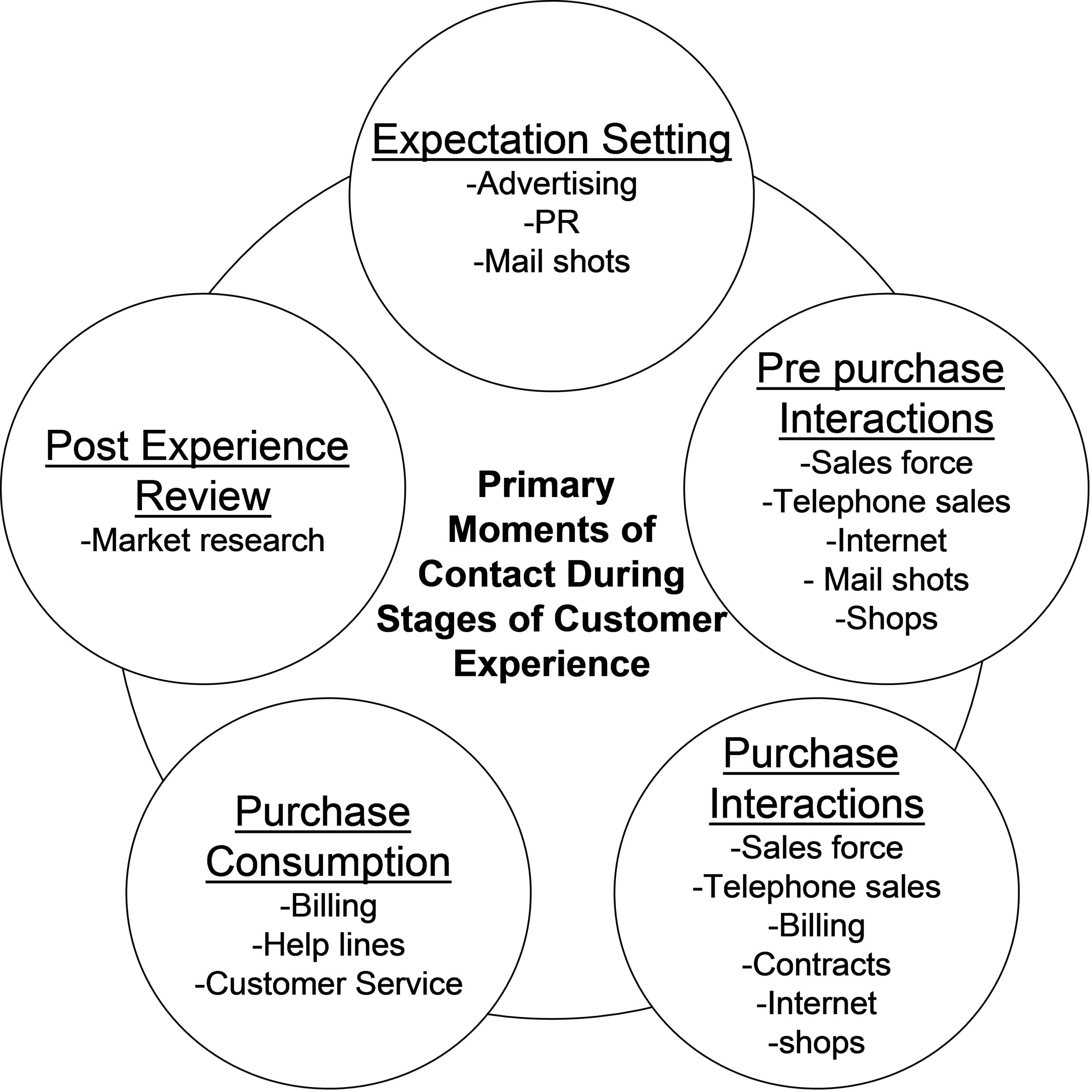Each of the above orientation areas has indicators that ultimately makeup the company’s orientation. There are four orientations:
Naïve – an organization that focuses on itself to the detriment of the customer. It is “inside out” either through choice or because it doesn’t know what is should be doing.
They tend to focus on themselves rather than the Customer Experience. They are reactive top customer demands. They believe the product, processes, or their services are more important than the customer. Their attitude with the customer is one of “take it or leave it” or “what do you expect from a product at this price?” Their processes are totally focused “inside out”, doing things for their benefit, rather than “outside in,” which is changing the organization to meet customer requirements.
The naïve oriented organization is organized around its products. These products overlap and are uncoordinated. It is typically a siloed organization and infighting between the silos is rife.
The organization is either in this orientation because they are:
- Unaware what they should be doing to build a great Customer Experience. They are not deliberately trying to cause a poor Customer Experience; it is simply that they do not know what they do not know. They are unaware of the impact on their Customer Experience. By definition they have not spent time thinking through the implications of what they are dong. This typically indicated they believe something else is more important than the Customer Experience.
- Aware of their orientation but simply don’t care as customers are a nuisance, and seen as a means to an end.
Naïve organizations typically target their people on sales or productivity, use internal measures, and either do not understand customer satisfaction surveys or take little notice of the results if they do.
Transactional – an organization that focuses primarily on the physical aspects of the Customer Experience; It has recognized the importance of the customers. However, it focus is rudimentary, as many aspects of the Customer Experience remain left to chance and are uncoordinated and “inside out.” The organization is typically reactive to customer demands.
They understand some of the basics of the Customer Experience but still remains reactive to customer demands. It has recognized that the customer is “quite” important and it has made some changes to reflect this. The core of its operation is primarily around the physical aspects of the Customer Experience, for example, opening times, answering calls in four rings, accessibility through the call centers, delivery times. It is, in reality, still “inside out” and its Customer Experience is not deliberate, but just happens. IT does not measure customer satisfaction but it is fundamentally focused on physical elements of the Customer Experience. Some employees are targeted on general customer satisfaction but this is, at best, an afterthought, compared to the important measures of sales and productivity. It has established a customer service organization but typically these employees are treated like second-class citizens.
Organizationally is often functionally siloed, with each silo treating the customer in a different manner. Little information is shared across the functions and customers are forced into dealing with many parts of the Transactional organization to get problems resolved. “Solutions” are billed separately, showing the lack of true coordination with the organization.
Enlightened – An organization that has recognized the need for a holistic, coordinated, and deliberate approach to the Customer Experience. It is proactive in nature towards the customer and orchestrates emotionally engaging Customer Experiences. It stimulates planned emotions.
The Enlightened oriented organization understands the importance of the Customer Experience and has thus achieved enlightenment. It has converted from being reactive to proactive to customer demands. It has understood the critical nature of defining the Customer Experience it is trying to deliver. It has spent time discussing this at a board level and agreed a Customer Experience statement, which has been communicated to all employees. It realizes that over 50% of every Customer Experience is about emotions and therefore it has embedded new processes into its Customer Experience, which are planned to to deliberately evoke emotions. Enlightened organizations recognize that customers have emotional expectations, as well as physical expectations, and plan to exceed both.
The Enlightened organization has formal methods to ensure that people spend time with the customer. This applies from the most senior members of the board to the intern. The leadership walks the talk regarding the Customer Experience.
Natural – an organization where focus on the customer is total. It is very proactive and is naturally focused on the complete Customer Experience. In order to produce memorable and captivating Customer Experiences it uses specific senses to evoke planned emotions.
In this orientation, the Customer Experience is in the organizations’ DNA. It does not have to consider what to do as it does it naturally. It understands the critical role that senses plan and has deliberately builds these into the Customer Experience. It understands that customers have sensory expectations and then use the senses to create captivating and memorable experiences. It involves the customer in the design of the Customer Experience and has defined its own Customer Experience Recipe. It is totally proactive to customer demands and undertakes many activities, which even the customer does not see, to build a great Customer Experience.
It recognizes the amazing power of “stories” and “storytelling,” both inside and outside the organization, and it uses these to great effect to build its unique Customer Experience. Its leadership, and everyone in the organization, has been selected to meet its deliberate Customer Experience. Its culture is aligned to the Customer Experience and is seen as an enabling tool. It uses theatre as a method of producing consistency of its Customer Experience. It considers the product or service it sells of secondary importance, as it knows if it gets the Customer Experience correct then the rest will follow. It has aligned the brand and its Customer Experience and one supports the other. It has very sophisticated methods of collecting customer data, which it constantly uses to improve its Customer Experience. Its systems look at the holistic Customer Experience and provide relevant data at points of contact with the customer.
The below chart indicates an organization’s orientation across three axes:
- X axis = the progression of an organization’s strategy on differentiation – from traditional product features, to service, then through to Customer Relations (ie: personalization and customization supporting relationship marketing) and finally then using Customer Experience as the primary source of differentiation.
- Y axis = the organization’s deliberate use of different facets of the Customer Experience, moving from product, through physical, to emotional and finally sensory.
- Z axis = denotes how customer focused the organization is.









